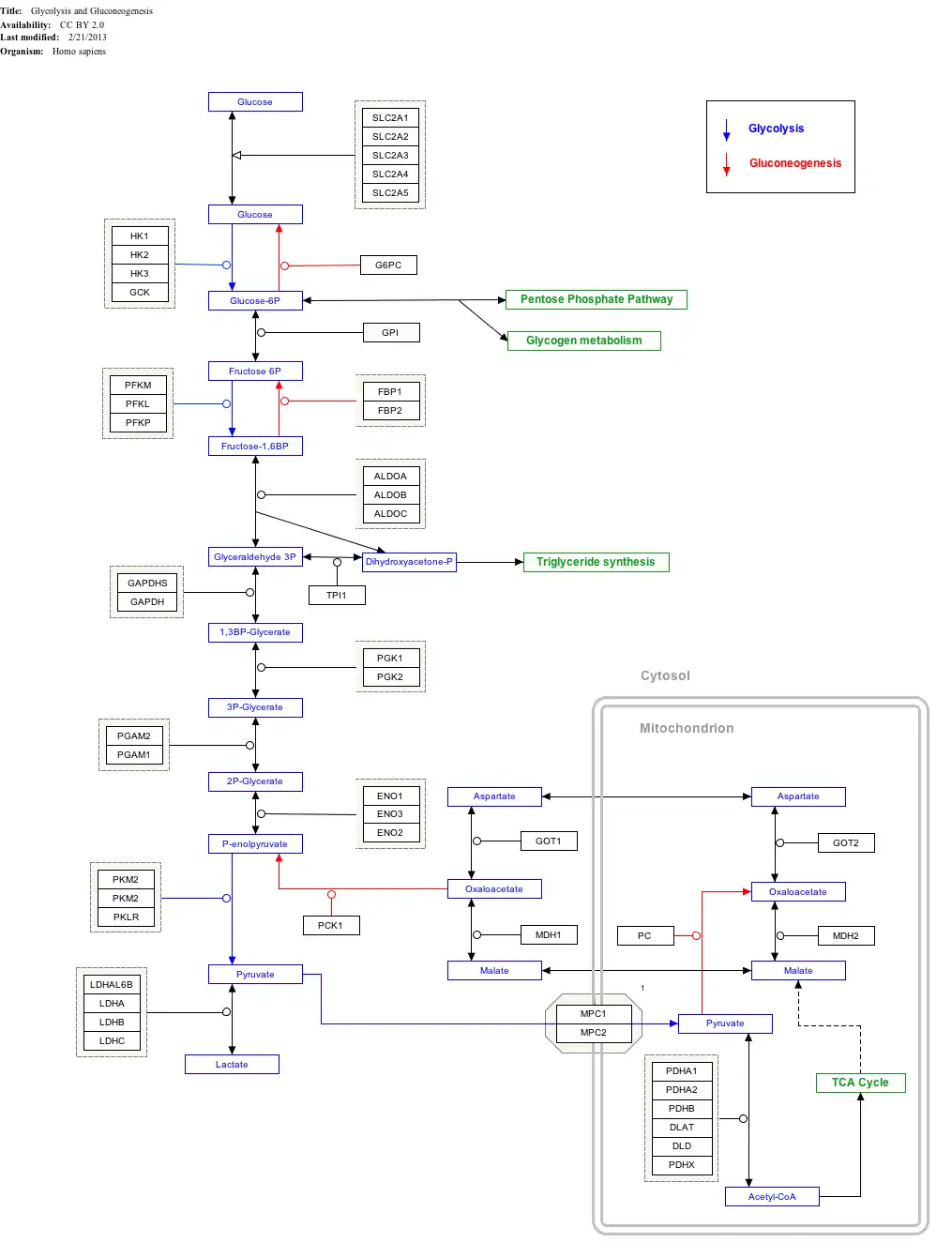GLUT3
Glucose transporter 3 (or GLUT3), also known as solute carrier family 2, facilitated glucose transporter member 3 (SLC2A3) is a protein that in humans is encoded by the SLC2A3 gene.[1] GLUT3 facilitates the transport of glucose across the plasma membranes of mammalian cells. GLUT3 is most known for its specific expression in neurons and has originally been designated as the neuronal GLUT. GLUT3 has been studied in other cell types with specific glucose requirements, including sperm, preimplantation embryos, circulating white blood cells and carcinoma cell lines.[2]
| glucose transporter, type 3 | |||||||||||||||||||||||||||||||||||||||||||||||||||
|---|---|---|---|---|---|---|---|---|---|---|---|---|---|---|---|---|---|---|---|---|---|---|---|---|---|---|---|---|---|---|---|---|---|---|---|---|---|---|---|---|---|---|---|---|---|---|---|---|---|---|---|
| Identifiers | |||||||||||||||||||||||||||||||||||||||||||||||||||
| Aliases | Glc_transpt_3IPR002945GLUT3Glucose transporter type 3brainGlut-3 | ||||||||||||||||||||||||||||||||||||||||||||||||||
| External IDs | GeneCards: | ||||||||||||||||||||||||||||||||||||||||||||||||||
| |||||||||||||||||||||||||||||||||||||||||||||||||||
| Wikidata | |||||||||||||||||||||||||||||||||||||||||||||||||||
| |||||||||||||||||||||||||||||||||||||||||||||||||||
Discovery
GLUT3 was the third glucose transporter to be discovered, first cloned in 1988 from a fetal skeletal muscle cell line, using a GLUT1 cDNA probe and shown to share 64.4% identity with GLUT1.[1]
Function
Although GLUT3 was found to be expressed in various tissues, it is most specifically expressed in neurons, found predominantly in axons and dendrites and also, but less prominently, in the cell body.[3] GLUT3 has at least a fivefold greater transport capacity than GLUT1 or GLUT4, as well as a higher glucose affinity than GLUT1, GLUT2 or GLUT4. This is significant as glucose levels surrounding the neurons are only 1–2 mM, compared to 5–6 mM in the serum.[2]
Brain
Glucose delivery and utilization in the mammalian brain is mediated primarily by a high molecular weight form of GLUT1 in the blood–brain barrier, GLUT3 in neuronal populations and a less glycosylated form of GLUT1 in the remainder of the parenchyma. GLUT3 is considered the main but not the exclusive neuronal glucose transporter, whereas other glucose transporters have also been observed in neurons.[3]
GLUT3 expression in neurons in the rat coincides with maturation and synaptic connectivity[4] and a positive correlation between protein levels of GLUT1, GLUT3 and regional cerebral glucose utilization was observed in mouse.[5]
The central role of GLUT3 in cerebral metabolism has been challenged by the astrocyte-neuron lactate shuttle (ANLS) hypothesis,[6] which proposes that astrocytes play the key role in the coupling of neuronal activity and cerebral glucose utilization. In this hypothesis, the astrocyte, which relies on GLUT1 for glucose transport, is the primary consumer of glucose in the brain, providing lactate as the primary energetic fuel for neurons. However, by modeling the kinetic characteristics and glucose concentrations in neurons and glia, it was concluded that the glucose capacity of neurons via GLUT3 far exceeds that of astrocytes via GLUT1.[7] Additionally, demonstrations of increase in GLUT3 expression associated with increased cerebral glucose utilization provides further confirmation of the central role of GLUT3.[5]
Other tissues
Expression of GLUT3 is also found in sperm, embryos, white blood cells and carcinoma cell lines.
Interactive pathway map
Click on genes, proteins and metabolites below to link to respective articles.[§ 1]
- The interactive pathway map can be edited at WikiPathways: "GlycolysisGluconeogenesis_WP534".
References
- Kayano T, Fukumoto H, Eddy RL, Fan YS, Byers MG, Shows TB, Bell GI (October 1988). "Evidence for a family of human glucose transporter-like proteins. Sequence and gene localization of a protein expressed in fetal skeletal muscle and other tissues". J Biol Chem. 263 (30): 15245–8. doi:10.1016/S0021-9258(19)37577-5. PMID 3170580.
- Simpson IA, Dwyer D, Malide D, Moley KH, Travis A, Vannucci SJ (August 2008). "The facilitative glucose transporter GLUT3: 20 years of distinction". Am. J. Physiol. Endocrinol. Metab. 295 (2): E242–53. doi:10.1152/ajpendo.90388.2008. PMC 2519757. PMID 18577699.
- Vannucci SJ, Maher F, Simpson IA (September 1997). "Glucose transporter proteins in brain: delivery of glucose to neurons and glia". Glia. 21 (1): 2–21. doi:10.1002/(SICI)1098-1136(199709)21:1<2::AID-GLIA2>3.0.CO;2-C. PMID 9298843. S2CID 13501112.
- Vannucci SJ, Clark RR, Koehler-Stec E, et al. (1998). "Glucose transporter expression in brain: relationship to cerebral glucose utilization". Dev. Neurosci. 20 (4–5): 369–79. doi:10.1159/000017333. PMID 9778574. S2CID 46874239.
- Khan JY, Rajakumar RA, McKnight RA, Devaskar UP, Devaskar SU (March 1999). "Developmental regulation of genes mediating murine brain glucose uptake". Am. J. Physiol. 276 (3 Pt 2): R892–900. doi:10.1152/ajpregu.1999.276.3.R892. PMID 10070152. S2CID 11700280.
- Pellerin L, Magistretti PJ (November 2003). "Food for thought: challenging the dogmas". J. Cereb. Blood Flow Metab. 23 (11): 1282–6. doi:10.1097/01.WCB.0000096064.12129.3D. PMID 14600434.
- Simpson IA, Carruthers A, Vannucci SJ (November 2007). "Supply and demand in cerebral energy metabolism: the role of nutrient transporters". J. Cereb. Blood Flow Metab. 27 (11): 1766–91. doi:10.1038/sj.jcbfm.9600521. PMC 2094104. PMID 17579656.
External links
- Glucose+Transporter+Type+3 at the U.S. National Library of Medicine Medical Subject Headings (MeSH)
